-
U.S. enhances national space-weather preparedness

Space-weather events are naturally occurring phenomena in the space environment that have the potential to disrupt technologies and systems in space and on Earth. These phenomena can affect satellite and airline operations, communications networks, navigation systems, the electric power grid, and other technologies and infrastructures critical to the daily functioning, economic vitality, and security of the United States. The White House Office of Science and Technology Policy said that that is why the administration the other day released a National Space Weather Strategy and National Space Weather Action Plan, and announced new commitments from the federal and non-federal sectors to enhance national preparedness for space-weather events.
-
-
How bad will this El Niño be? Worse than you may think

Last week, Columbia University Earth Institute’s International Research Institute on Climate and Society convened a 2-day workshop reflecting on efforts over the past twenty years to improve responses to climate variability, especially risks associated with El Niño. Concerns that the current El Niño has the potential to exceed in severity the devastating El Niño of 1997-98 permeated the discussion. At the conference, Marc A. Levy of the Earth Institute presented a brief overview of the social, economic, and political changes that will have a large effect on human impacts from El Niño. He amplifies those remarks here.
-
-
“Iconic” El Niño may bring more than rain to California
A few weeks ago in the hills north of Los Angeles, heavy rain set off widespread mudslides that blocked roads and covered highways, burying hundreds of vehicles and bringing much of Los Angeles’ infamous traffic to a standstill. For Californians, these mudslides are just one of many recent harbingers signaling the imminent arrival of a “monster” El Niño — an El Niño that started bubbling up from unusually warm temperatures in the tropical Pacific last summer. In Southern California, a strong El Niño usually signals rain, and given that California is now in the throes of a severe drought, it seems like that should be a good thing, even if it comes with risk of floods. But the reality of climate is more complex and counter-intuitive than it first appears, and Californians should be careful what they wish for.
-
-
Discovery of “hidden earthquake” challenges tsunami early-warning systems
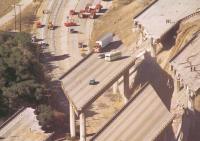
Seismologists studying the 2011 Chile earthquake have discovered a previously undetected earthquake which took place seconds after the initial rupture. This newly discovered phenomena which they have called a “closely spaced doublet” presents a challenge to earthquake and tsunami early warning systems as it increases the risk of larger-than-expected tsunamis in the aftermath of a typical subduction earthquake.
-
-
Greenhouse gas concentrations in the atmosphere hit another record
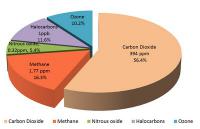
The amount of greenhouse gases in the atmosphere reached yet another new record high in 2014, continuing a relentless rise which is fueling climate change and will make the planet more dangerous and inhospitable for future generations, according to the World Meteorological Organization (WMO). The pre-industrial level of CO2 — of about 278 ppm — represented a balance between the atmosphere, the oceans, and the biosphere. Human activities such as the burning of fossil fuels has altered the natural balance, and in spring 2015, the global average concentration of CO2 crossed the 400 ppm barrier. The global annual average is likely to pass 400 ppm in 2016.
-
-
Climate change adaptation – from local initiatives to national policies
We all know that the climate is changing, but how can we best prepare for some of the changes that lie ahead? Should coastal cities change their building codes to accommodate rising sea levels? Should we allocate more resources to tree-planting to reduce urban heat islands? These are examples of local initiatives that can make a difference to climate change adaptation. Indeed, climate adaptation is a rapidly growing concern for the international community.
-
-
Quickly, inexpensively locating short circuits in power grids
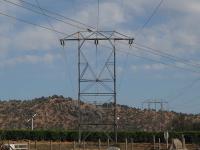
When a high-voltage power line is damaged by wind, ice, or a tree, electricity utilities must quickly find the fault location and repair it to meet the power quality requirements or avoid cascade blackout. In the common practice, they locate the fault by first identifying the section without power through the use of sensors placed at regular intervals along the power line. A technician must then go to that section and visually inspect the line in order to find the fault location. Researchers have come up with a new method, which is faster and less expensive, for precisely determining where the short circuit takes place.
-
-
Pre-drilling computer analysis could limit fracking-induced earthquakes
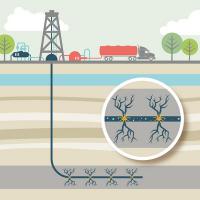
Hydraulic fracturing, also known as “fracking,” is used to break the subsurface rock mass into pieces and is done by injecting high-pressure fluid. While this gives the fluid or gas more paths to reach production wells, it also leads to several environmental problems, one of which is the unwanted shaking of the ground structures caused by the movement of large faults. Using computer analysis prior to drilling could limit seismic events as a result of hydraulic fracturing.
-
-
Solving the problem of “concrete disease”
When bridges, dam walls, and other structures made of concrete are streaked with dark cracks after a few decades, the culprit is AAR: the alkali-aggregate reaction. Also called the “concrete disease,” or even “concrete cancer,” it is a chemical reaction between substances contained in the material and moisture seeping in from outside. AAR damages concrete structures all over the world and makes complex renovations or reconstructions necessary. Researchers have now solved the structure of the material produced in the course of AAR at atomic level — and have thereby discovered a previously unknown crystalline arrangement of the atoms.
-
-
Smart grids better able to withstand climate change challenges
At the end of October 2012, Hurricane Sandy swept across the northeastern United States at speeds of more than 90 mph. Millions of people were left in the dark. In an era of climate change, energy management systems will have to become increasingly robust in order to withstand natural disasters like Sandy – and also floods, wildfires, heat waves, and droughts. The U.S. power supply — with more than 9,200 power plants and nearly half a million kilometers of overhead lines, about a third of a million miles – is already feeling the strain today. Smart Grid technologies have helped to make power grids more resilient to climate change challenges.
-
-
Game for climate adaptation
An MIT-led project takes the adage “think globally, act locally” to heart by demonstrated a new method for getting local citizens and leaders to agree on the best ways of managing the immediate and long-term effects of climate change. The project got local citizens and officials in four coastal towns to engage in role-playing games about climate change tailored to their communities — which in coastal communities may include rising sea levels and increased storm surges that can lead to flooding.
-
-
Blitz spirit needed to meet challenges like climate change: Dr. Hugh Hunt
Today’s engineers will need the kind of drive and determination shown by the great wartime innovators such as Sir Barnes Wallis and Sir Frank Whittle if they are to respond effectively to challenges such as climate change, Dr. Hugh Hunt told the Royal Academy of Engineering on Tuesday. Hunt compared today’s challenge of adapting to future climate change with the imperative to develop new technologies to tip the balance of military capability in favor of the Allies during the Second World War.
-
-
Innovative ways to protect the smart grid
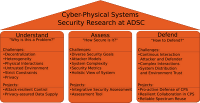
The physical infrastructure of the U.S. electric grid is aging, overburdened, and vulnerable to natural hazards. This is not the bad news. The bad news is that efforts to solve these issues have opened the door to new vulnerabilities. New approaches which transform how energy is produced, delivered, and consumed have created increased reliance on complex data flows, interconnected systems, and sophisticated technologies – that is, the new smart grid. With smarter systems, however, come equally smart hackers. To stay one step ahead of cyberattacks, engineers and scientists are exploring innovative new ways to operate and secure the grid, using the tools of game and control theory.
-
-
Self-healing concrete being tested
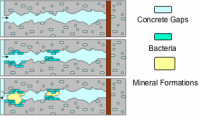
At present, billions of pounds are spent every year maintaining, fixing, and restoring structures such as bridges, buildings, tunnels, and roads. It is estimated that around £40 billion a year is spent in the United Kingdom on the repair and maintenance of structures, the majority of which are made from concrete. Researchers are testing three separate concrete-healing technologies for the first time in real-world settings, with a view to incorporating them into a single system that could be used to automatically repair concrete in the built environment.
-
-
Update issued for southeast Florida regional sea level rise projections
The four-county Southeast Florida Regional Climate Change Compact (Compact) has prepared an update to the regional sea level rise projections used for important planning purposes. Overall, the update includes minor changes to the short-term curves, but a more significant increase in the mid-and long-term projections. The 2015 update estimates sea level rise of 6 to 10 inches by 2030, or 3 to 5 inches above average sea level in 2015. Predictions for the mid-term are between 11 and 22 inches of additional sea level rise by 2060, and longer-term between 28 and 57 inches by 2100.
-
- All
- Regional
- Water
- Biometrics
- Borders/Immig
- Business
- Cybersecurity
- Detection
- Disasters
- Government
- Infrastructure
- International
- Public health
- Public Safety
- Communication interoperabillity
- Emergency services
- Emergency medical services
- Fire
- First response
- IEDs
- Law Enforcement
- Law Enforcement Technology
- Military technology
- Nonlethal weapons
- Nuclear weapons
- Personal protection equipment
- Police
- Notification /alert systems
- Situational awareness
- Weapons systems
- Sci-Tech
- Sector Reports
- Surveillance
- Transportation
Advertising & Marketing: advertise@newswirepubs.com
Editorial: editor@newswirepubs.com
General: info@newswirepubs.com
2010-2011 © News Wire Publications, LLC News Wire Publications, LLC
220 Old Country Road | Suite 200 | Mineola | New York | 11501
Permissions and Policies
Editorial: editor@newswirepubs.com
General: info@newswirepubs.com
2010-2011 © News Wire Publications, LLC News Wire Publications, LLC
220 Old Country Road | Suite 200 | Mineola | New York | 11501
Permissions and Policies
